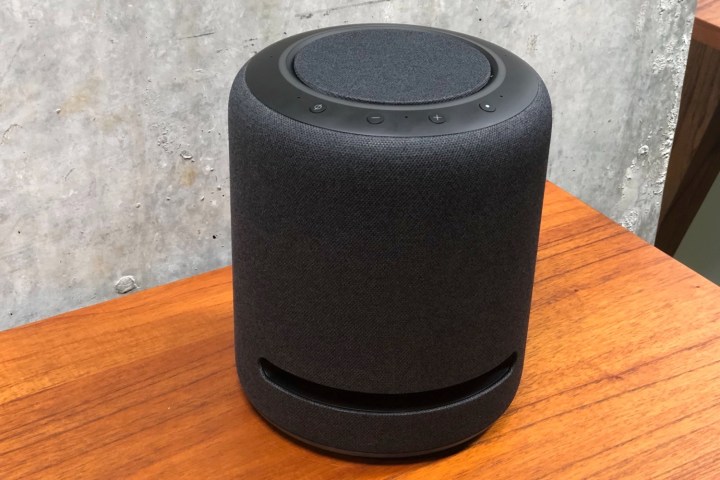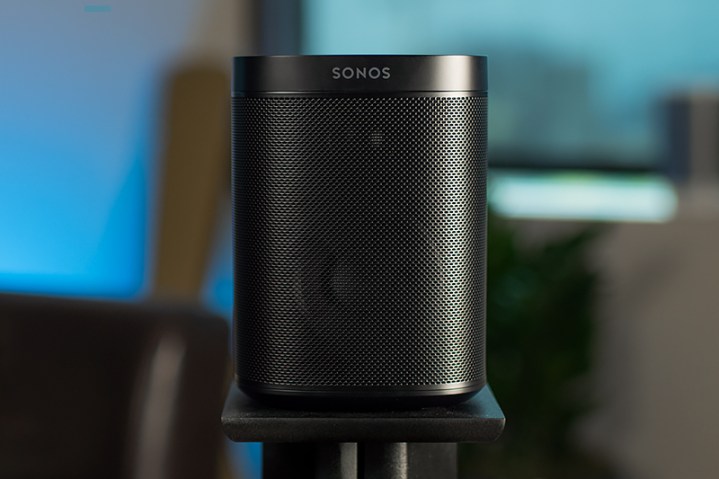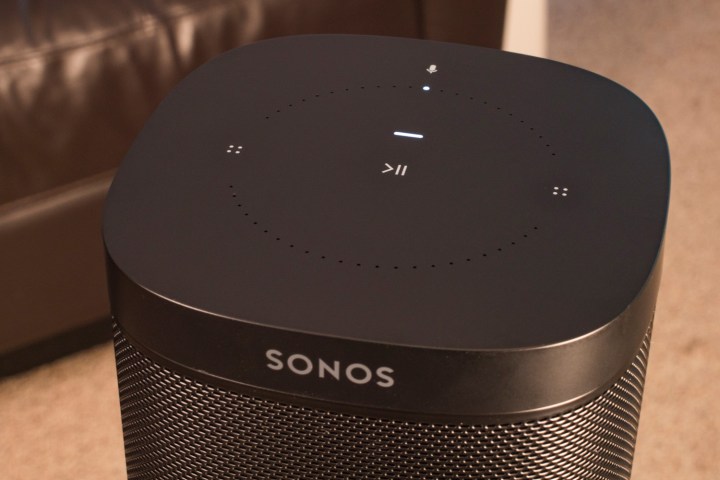For years, Sonos fans clamored for a smart speaker to make its way to the platform. For nearly as long, Amazon Echo speaker supporters have yearned for the kind of ease of use and sound quality for which the Sonos family is famous.
In 2017, Sonos provided its answer in the Sonos One, a compact wireless speaker with Amazon Alexa (and later) Google Assistant access built in. Two years later, Amazon put all its chips on the table with the Amazon Echo Studio, designed to be Amazon’s best-sounding speaker yet. Now both companies have something more versatile to offer smart-speaker fans. But which is the better buy? We stacked the pair against each other in multiple categories to find out.
Price

Unsurprisingly, the Echo Studio and
Winner: Draw
Design

This may be the category in which these speakers differ the most. The
The Echo Studio, while still cylindrical in shape, weighs in at over seven pounds. It’s also much bigger, due to its need to fit a pair of dual 2-inch drivers at the sides, a 1-inch tweeter at the front and a 5.25 down-firing woofer. There’s also an up-firing 2-inch driver as part of the Echo Studio’s ability to support 3D sound formats. We’ll get into that below.
The
Winner:
Sound quality

With other Amazon Echo speakers, there hasn’t been much of a comparison between
Well, the Echo Studio significantly shortens that gap. It even takes the advantage in the low range, with that down-firing woofer proving to pack a well-controlled punch. On top of that, the Echo Studio features 3D soundstage with Dolby Atmos support as well as high-resolution playback that add an intriguing level of expansion and definition to the Studio’s soundstage.
With that said, the Studio still lacks some clarity in the midrange on some tracks, likely due to offering just a single tweeter up front, which means that for many tracks, vocals and other instruments aren’t as clear as the
Winner:
Features

This one’s tough. The
The Echo Studio, of course, is an Alexa-enabled speaker only, which means if you’re adding the speaker as part of a larger smart home ensemble, controlling other devices throughout the house will be a streamlined, effortless process. For our money, it does give up a step to
Additionally, the fact that the Echo Studio supports Atmos music, 360 Reality Audio, and high-resolution music puts the speaker in a category all its own, even if there aren’t many tracks available in those formats at present.
The ease of use, coupled with a plethora of supported formats and supreme smart-home control, gives the Echo Studio the edge as far as features.
Winner: Echo Studio
Conclusion
The
Amazon’s Echo Studio, though, is still a fantastic speaker that may be the right choice for many
For the growing congregation of smart home enthusiasts, the Echo Studio has carved out a serious spot as a great-sounding smart home hub.
In the end, you’ll have to make the choice, but you’ve now got the tools you need to do just that.
Editors' Recommendations
- Best Amazon Echo deals: Save on Pop, Show, Dot, and Studio
- Amazon’s new $50 Echo Buds take aim at Apple’s AirPods
- Amazon Echo Show 15 is getting the full Fire TV update today
- Sonos adds Dolby Atmos Music and hi-res audio support for Amazon Music
- These limited-edition Sonos speaker stands cost more than the actual speakers




